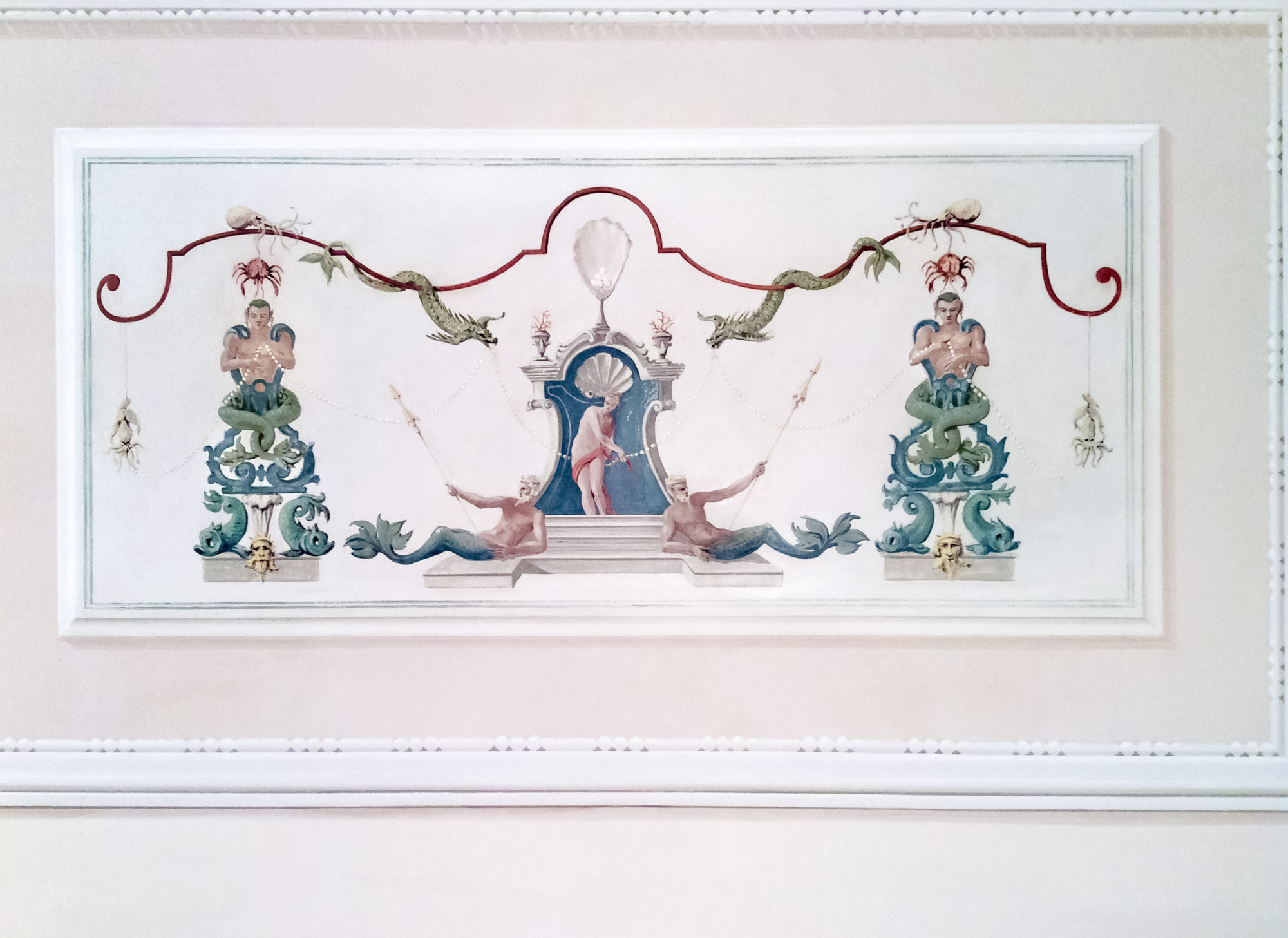This basement bathroom in London was painted in a dusty pink and panelled with painted frames. The client then asked for some ornamentation to be inserted, so I put this together from all sorts of sources, mostly late renaissance engravings. The decoration is painted in casein and lime and has, of course, a watery theme. I had a lot of fun inventing sea monsters, tritons and creatures of the deep.
Ancient Rome
These type of ornaments are called grotesque. They are ornamental arrangements of arabesques with interlaced garlands and small and fantastic human and animal figures, usually set out in a symmetrical pattern around some form of architectural framework. Such designs were fashionable in ancient Rome, as fresco wall decoration or floor mosaic.
Senselessly seated
The style was unloved by Roman architect and author Vitruvius (c. 30 BC), who dismissively wrote: “reeds are substituted for columns, fluted appendages with curly leaves and volutes take the place of pediments, candelabra support representations of shrines, and on top of their roofs grow slender stalks and volutes with human figures senselessly seated upon them.”
Ropes and torches
The current name of this type of ornamentation is not from antiquity. When the emperor Nero’s palace in Rome, the Domus Aurea, was rediscovered in the late 15th century, buried in fifteen hundred years of fill, the first breakthrough was from above, so that those keen to see the rooms had to be lowered down into them on ropes, as with caves, or grottoes in Italian. Hence the name grotesque.
Revelation to artists
The Roman wall decorations in fresco and delicate stucco were at that time a revelation to artists, who were familiar with the grammar of the classical orders, but had not guessed till then that in their private houses the Romans had often disregarded those rules and had adopted instead a more fanciful and informal style, that was all lightness, elegance and grace.
Lasting influence
The grotesques, as they were from then on known, had a profound and long lasting influence on the way decoration was painted, plastered and placed on walls and ceilings. From the moment of discovery with candles and torches to the great decorative schemes in palazzi and villas all around Europe and now even in this modest London bathroom, yet another Roman legacy continues. So really apart from that, what have the Romans ever done for us?

